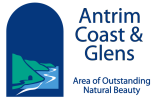Ballycastle Town
Ballycastle, County Antrim, BT54
A popular holiday destination enjoyed by many, the quaint and idyllic rural town of Ballycastle has many an activity to wile away a relaxing short break.
Located on the north easterly tip of County Antrim, Ballycastle lies in the Moyle district. Among its main attractions is the outstanding natural beauty it possesses. Views of surrounding mountain ranges, lakes, glens, forest parks and coastline are just a few of its hidden charms.
The centre of the County’s pride and joy, the Nine Glens of Antrim, Ballycastle is used by many as an ideal base for exploring the nearby sights of infamous landmarks such as the Giant’s Causeway, Bushmills Distillery and the Carrick-a-rede rope bridge – each located less than 10 miles away.
In Ballycastle Town itself, a popular tourist attraction is Knocklayde Mountain. Another local destination point is Ballycastle Forest – perfect for a leisurely stroll or family picnic.
There is also a local beach and harbour nearby.
Other attractions:
When in the area why not avail of a daily ferry ride to Rathlin Island, seven miles from the town, which allegedly owes its existence to the legendary Fionn McCool.
You may also take in the sights of the Mull of Kintyre, located 15 miles across the Irish sea. It is a 15-mile long peninsula of the narrowest stretch of water between Scotland and Ireland.
During the summer months the town hosts an annual three-day music festival – Fleadh Amhrain agus Rince, in June.
The Ould Lammas Fair is also held on the last Monday and Tuesday in August. Here you can purchase traditional delicacies such as Dulce – dried seaweed, or yellowman chewy toffee – an ideal gift for friends and family back home.
And for the outdoor pursuits enthusiast, a popular cycle route runs from Ballycastle to Cushendun offering spectacular views and scenery.
Life and Legend
Ballycastle is named for its castle, but the question is, which castle? There is Dun-a-Mallaght, the fort of the curse which sits high above the old harbour, Dunrainey, the Fort of the Queen which is a tee on the golf course, Dunaneany, the Fort of the Fair, which was Sorley Boy McDonnell’s home and one in the diamond with a date stone of 1625 and who knows, there might have been older cashels than these when Ballycastle was the main harbour of the Kingdom of Dal Riata.
The town has two main streets, one leading to the diamond with its fine Georgian church and the other to the harbour and coast. Ballycastle is famous for its Lammas Fair, which is held every year on the last Monday and Tuesday of August when many thousands of people visit to buy and take in the atmosphere of the fair.
They buy the two special Ballycastle treats, dulse, an edible seaweed and yellow man which is a yellow sweet that is very hard.
The great domed heather covered mountain which stands behind Ballycastle is Knocklayde. It rises to more than 500 metres and is crowned by Carn na Truagh (the cairn of sorrow), a prehistoric burial mound. Glentaisie, the most northerly of the Nine Glens of Antrim, lies at the foot of Knocklayde. It was named for Princess Taisie, the daughter of the King of Rathlin Island. Taisie was renowned for her great beauty and she was to marry Congal who would be the next High King of Ireland. The King of Norway had heard of her beauty and when he heard she was engaged, he travelled to her castle to win her for himself. He arrived in the middle of the wedding ceremony, but all the warriors were there for the celebration, so in the battle which followed the Norwegian King was killed and his men fled for their lives.
The Carey, Glenshesk and Tow Rivers flow down from the glens and join together near to the town into one river. The bigger river, the Margy is an old name for the market and it flows into the Sea of Moyle at the start of the Beach…At the end of the beach, the rocks are called the Pans Rocks, not in memory of a Greek God, but because there were salt pans here, used to extract sea salt.
Search among the rocks here, for there are five faces carved into them, looking out to sea.
The salt pans were part of the industrial development of the town by Hugh Boyd in the 1750s. He also ran a coal mine which ran under the sea, built a glass works near the bridge and the church in the Diamond. Sometimes along the beach it is still possible to find the colourful glass slag from the glassworks.
Ballycastle was a Viking settlement and their harbour was right beside the road. Its wall still stands, but now it encloses the courts of Ballycastle Tennis Club.
Bonamargy Friary, just outside the town was founded in 1485 by Rory MacQuillan. When the McDonnells became lords of the Route, they built a side chapel at Bonamargy and the remains of the earliest Earls of Antrim lie within its vault. The prophetess Julia McQuillan, the Black Nun is buried here too. She lies beneath a holed cross at the entrance to the Friary which is much older than the friary itself. She asked to be buried in the doorway of a church, so the people would walk over her on their way to worship.
The Rathlin Island Ferry runs a regular service from Ballycastle Harbour. Above the harbour, there is a memorial to Guglielmo Marconi. In 1898, Marconi made the first radio transmission in the world from Ballycastle to the East Lighthouse on Rathlin Island.
Video produced by Ambient Light Productions
